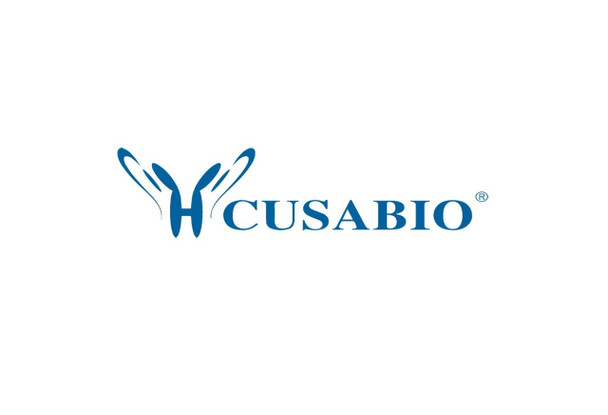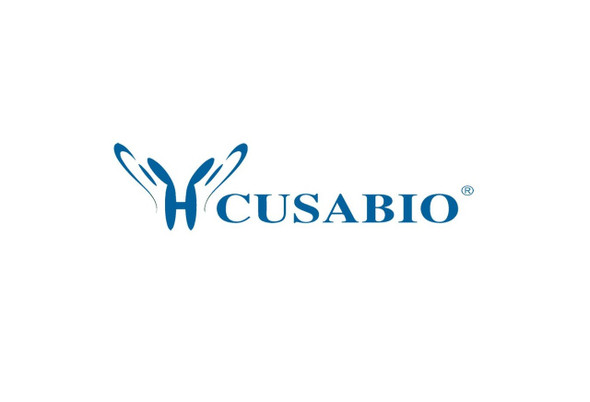Cusabio Human Recombinants
Recombinant Human Killer cell lectin-like receptor subfamily G member 1 (KLRG1), partial | CSB-EP846610HU
- SKU:
- CSB-EP846610HU
- Availability:
- 3 - 7 Working Days
Description
Recombinant Human Killer cell lectin-like receptor subfamily G member 1 (KLRG1), partial | CSB-EP846610HU | Cusabio
Alternative Name(s): C-type lectin domain family 15 member AITIM-containing receptor MAFA-LMAFA-like receptorMast cell function-associated antigen
Gene Names: KLRG1
Research Areas: Immunology
Organism: Homo sapiens (Human)
AA Sequence: LCQGSNYSTCASCPSCPDRWMKYGNHCYYFSVEEKDWNSSLEFCLARDSHLLVITDNQEMSLLQVFLSEAFCWIGLRNNSGWRWEDGSPLNFSRISSNSFVQTCGAINKNGLQASSCEVPLHWVCKKCPFADQALF
Source: E.coli
Tag Info: N-terminal 6xHis-SUMO-tagged
Expression Region: 60-195aa
Sequence Info: Extracellular Domain
MW: 31.5 kDa
Purity: Greater than 90% as determined by SDS-PAGE.
Relevance: Plays an inhibitory role on natural killer (NK) cells and T-cell functions upon binding to their non-MHC ligands. May mediate missing self recognition by binding to a highly conserved site on classical cadherins, enabling it to monitor expression of E-cadherin/CDH1, N-cadherin/CDH2 and R-cadherin/CDH4 on target cells.
Reference: Complete sequencing and characterization of 21,243 full-length human cDNAs.Ota T., Suzuki Y., Nishikawa T., Otsuki T., Sugiyama T., Irie R., Wakamatsu A., Hayashi K., Sato H., Nagai K., Kimura K., Makita H., Sekine M., Obayashi M., Nishi T., Shibahara T., Tanaka T., Ishii S. , Yamamoto J., Saito K., Kawai Y., Isono Y., Nakamura Y., Nagahari K., Murakami K., Yasuda T., Iwayanagi T., Wagatsuma M., Shiratori A., Sudo H., Hosoiri T., Kaku Y., Kodaira H., Kondo H., Sugawara M., Takahashi M., Kanda K., Yokoi T., Furuya T., Kikkawa E., Omura Y., Abe K., Kamihara K., Katsuta N., Sato K., Tanikawa M., Yamazaki M., Ninomiya K., Ishibashi T., Yamashita H., Murakawa K., Fujimori K., Tanai H., Kimata M., Watanabe M., Hiraoka S., Chiba Y., Ishida S., Ono Y., Takiguchi S., Watanabe S., Yosida M., Hotuta T., Kusano J., Kanehori K., Takahashi-Fujii A., Hara H., Tanase T.-O., Nomura Y., Togiya S., Komai F., Hara R., Takeuchi K., Arita M., Imose N., Musashino K., Yuuki H., Oshima A., Sasaki N., Aotsuka S., Yoshikawa Y., Matsunawa H., Ichihara T., Shiohata N., Sano S., Moriya S., Momiyama H., Satoh N., Takami S., Terashima Y., Suzuki O., Nakagawa S., Senoh A., Mizoguchi H., Goto Y., Shimizu F., Wakebe H., Hishigaki H., Watanabe T., Sugiyama A., Takemoto M., Kawakami B., Yamazaki M., Watanabe K., Kumagai A., Itakura S., Fukuzumi Y., Fujimori Y., Komiyama M., Tashiro H., Tanigami A., Fujiwara T., Ono T., Yamada K., Fujii Y., Ozaki K., Hirao M., Ohmori Y., Kawabata A., Hikiji T., Kobatake N., Inagaki H., Ikema Y., Okamoto S., Okitani R., Kawakami T., Noguchi S., Itoh T., Shigeta K., Senba T., Matsumura K., Nakajima Y., Mizuno T., Morinaga M., Sasaki M., Togashi T., Oyama M., Hata H., Watanabe M., Komatsu T., Mizushima-Sugano J., Satoh T., Shirai Y., Takahashi Y., Nakagawa K., Okumura K., Nagase T., Nomura N., Kikuchi H., Masuho Y., Yamashita R., Nakai K., Yada T., Nakamura Y., Ohara O., Isogai T., Sugano S.Nat. Genet. 36:40-45(2004)
Storage: The shelf life is related to many factors, storage state, buffer ingredients, storage temperature and the stability of the protein itself. Generally, the shelf life of liquid form is 6 months at -20?/-80?. The shelf life of lyophilized form is 12 months at -20?/-80?.
Notes: Repeated freezing and thawing is not recommended. Store working aliquots at 4? for up to one week.
Function: Plays an inhibitory role on natural killer (NK) cells and T-cell functions upon binding to their non-MHC ligands. May mediate missing self recognition by binding to a highly conserved site on classical cadherins, enabling it to monitor expression of E-cadherin/CDH1, N-cadherin/CDH2 and R-cadherin/CDH4 on target cells.
Involvement in disease:
Subcellular Location: Cell membrane, Single-pass type II membrane protein
Protein Families:
Tissue Specificity: Expressed specifically on natural killer (NK) cells and T-cells, mainly CD8 T-cells.
Paythway:
Form: Liquid or Lyophilized powder
Buffer: If the delivery form is liquid, the default storage buffer is Tris/PBS-based buffer, 5%-50% glycerol. If the delivery form is lyophilized powder, the buffer before lyophilization is Tris/PBS-based buffer, 6% Trehalose, pH 8.0.
Reconstitution: We recommend that this vial be briefly centrifuged prior to opening to bring the contents to the bottom. Please reconstitute protein in deionized sterile water to a concentration of 0.1-1.0 mg/mL.We recommend to add 5-50% of glycerol (final concentration) and aliquot for long-term storage at -20?/-80?. Our default final concentration of glycerol is 50%. Customers could use it as reference.
Uniprot ID: Q96E93
HGNC Database Link: HGNC
UniGene Database Link: UniGene
KEGG Database Link: KEGG
STRING Database Link: STRING
OMIM Database Link: OMIM









